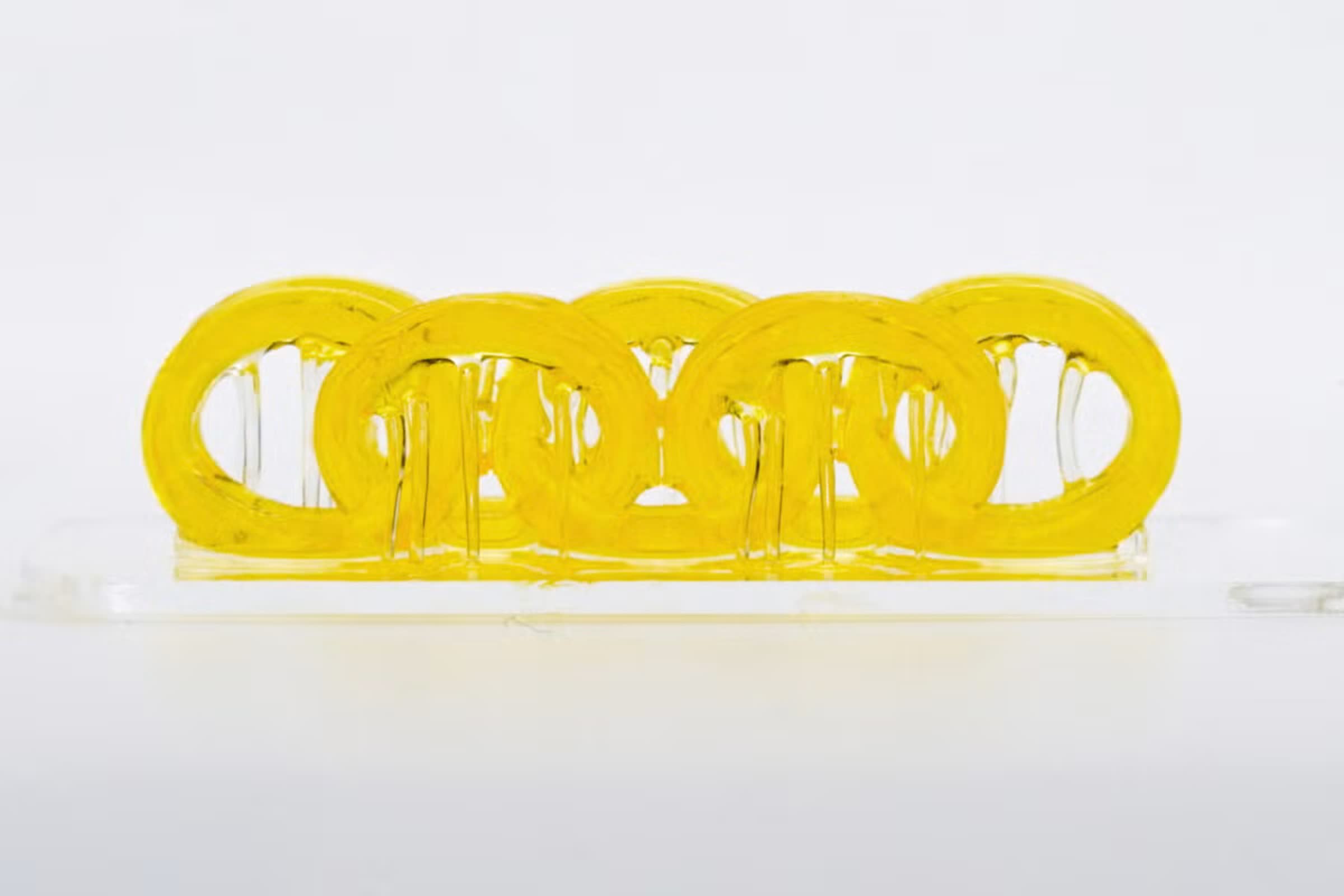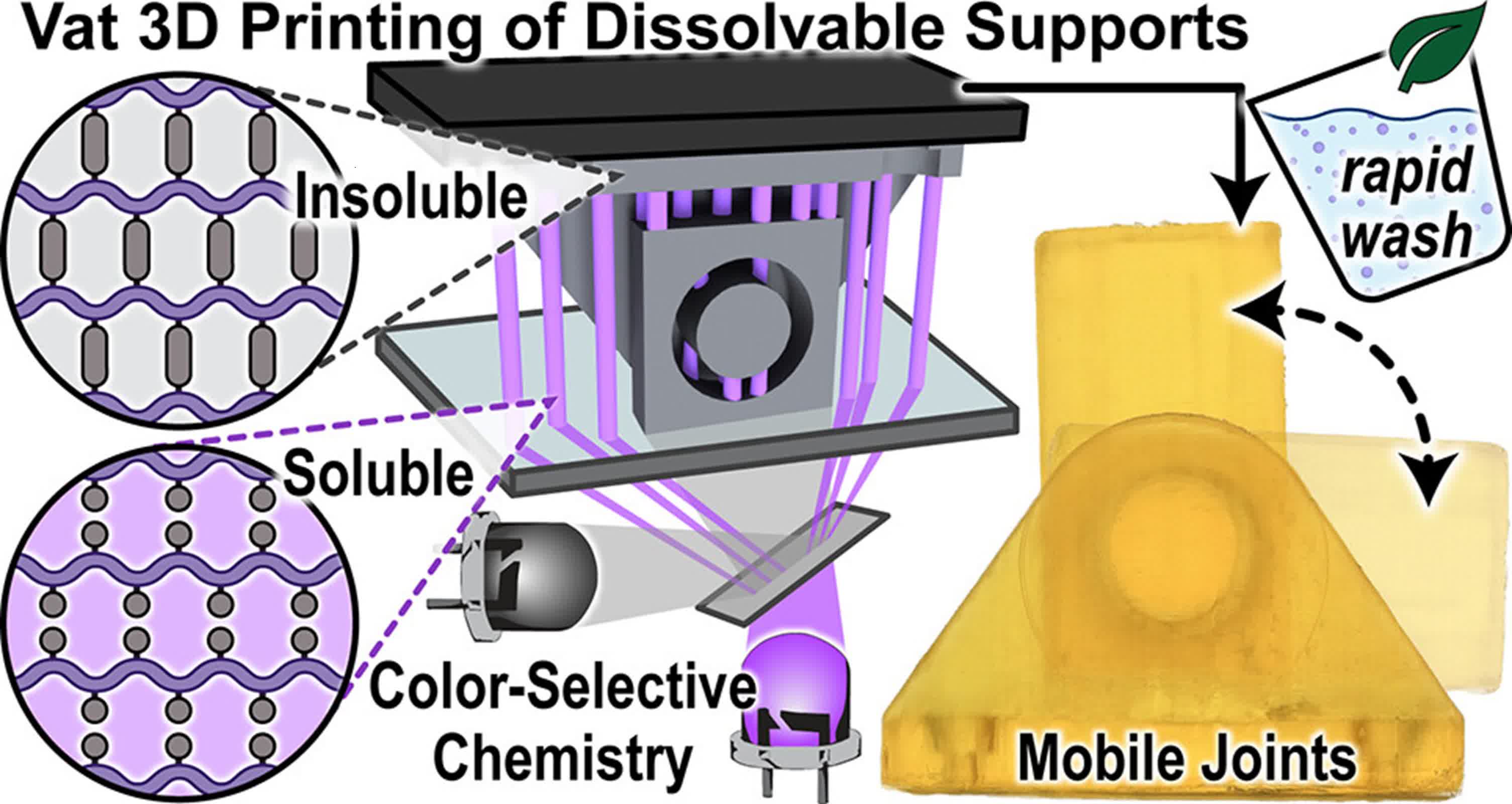Forward-looking: Researchers at the University of Texas at Austin have unveiled a new 3D printing technique that could transform how engineers and doctors design devices that require both strength and flexibility. Drawing inspiration from the way natural structures, such as bones and cartilage, combine toughness and pliability, the team has developed a method for creating objects that blend soft and hard materials in a single print.
The technology, detailed in the journal Nature Materials, relies on a specially formulated liquid resin and a unique dual-light printing process. Unlike traditional 3D printing, which typically produces objects with uniform properties, this approach allows for the precise placement of both rigid and elastic regions within the same item. The result is a printed object that mimics the complex geometry and mechanical behavior found in nature.
At the heart of the process is a resin that responds differently depending on the color of light to which it is exposed. When the resin is illuminated with violet light, it solidifies into a soft, rubbery material. However, when exposed to higher-energy ultraviolet light, the same resin transforms into a much more rigid, more durable plastic.
By carefully controlling where and when each type of light is used during printing, the researchers can dictate which parts of the object will be flexible and which will be rigid.
One of the key challenges in combining materials with such different properties is ensuring a strong bond at the interface where they meet. In many manufactured goods, the junction between hard and soft components is a weak point that can fail over time.
The UT Austin team addressed this by designing a molecule for their resin that carries two types of reactive groups. This allows the two solidification reactions, triggered by different light wavelengths, to interact at the molecular level. This also enables the creation of gradual transitions between the two, avoiding abrupt changes that could lead to failure.
To demonstrate the potential of their method, the researchers printed a model knee joint featuring rigid "bones" and flexible "ligaments" that moved together smoothly, much like their biological counterparts.
They also fabricated a stretchable electronic device with a gold wire embedded in a strip that could bend and flex in some areas while remaining stiff in others, thereby protecting the circuitry.
The new printing process is not only faster and more precise than earlier attempts to blend soft and hard materials, but it is also accessible. The equipment required is relatively simple and affordable, making it feasible for use in research labs, hospitals, and educational settings.
This opens the door to a range of applications, from custom prosthetics and surgical models to wearable sensors and soft robotics. Several organizations, including the US Department of Defense, the National Science Foundation, and the Robert A. Welch Foundation, supported the work.
New dual-light 3D printing method combines soft and hard materials in a single object

